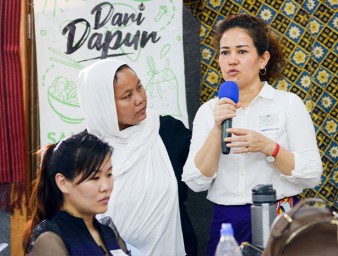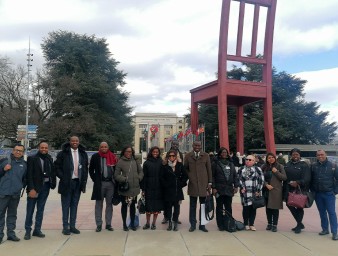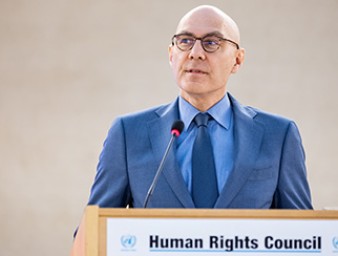Using numbers to achieve human rights goals
20 October 2010

Graciela Mellibovsky Saidler was a 29-year-old Argentine government economist. In 1976 she produced a statistical study on conditions in the slums of Buenos Aires which was so deeply embarrassing to the military dictatorship that it was publicly singled out by the Junta leader, General Jorge Videla, as an example of the infiltration of subversives into the government. Shortly afterwards, on 25 September, 1976, she “disappeared”. Graciela’s story is cited in “Statistical Methods for Human Rights”, edited by Jana Asher, David Banks and Fritz J. Scheuren, 2008 who write, “It is fitting that this work, devoted to the use of statistics in the investigation of human rights violations, be dedicated to Graciela who gave her life to bring truth through numbers.”
This year for the first time on 20 October, World Statistics Day is being celebrated to help strengthen the awareness and trust of the public in official statistics. In a statement marking the Day, UN Secretary-General Ban Ki-moon emphasized that statistics are vital in achieving economic and social development.
“For development to succeed, we need data collection and statistical analysis of poverty levels, access to education and the incidence of disease. Statistics are a central consideration in justifying almost every aspect of budgets and programmes that enable hungry children to be fed or that provide shelter and emergency health care for victims of natural disasters,” the Secretary-General said.
Recognizing that data, its collection and assembly is essential in realizing human rights, and in conformity with the principles establishing the UN Human Rights Council, including universality, objectivity, constructive dialogue and cooperation, the UN Human Rights office has developed a framework which adopts a common approach to the identification of indicators for the monitoring of civil, cultural, economic, political and social rights.
Human Rights Chief Navi Pillay has noted that the framework “makes available precise and up-to-date data which helps States in assessing progress in human rights implementation and capacity-building. It is not intended as a tool for ranking the level of implementation by Member States. It is this distinguishing, non-competitive ranking character that has made OHCHR’s indicators highly attractive as an enabling tool“.
“The indicators seek to spell out the essential dimensions of rights enshrined in international human rights instruments, translating each category of rights into specific quantitative measures,” she says.
The framework developed by the UN Human Rights office now offers lists of illustrative indicators for a wide range of rights including, the right to life; the right to liberty and security of person; the right not to be subjected to torture or cruel, inhuman or degrading treatment or punishment; the right to the enjoyment of the highest attainable standard of physical and mental health; the right to adequate food; the right to adequate housing; the right to education; the right to participate in public affairs; the right to freedom of opinion and expression; the right to a fair trial; the right to social security; the right to work; the right to non-discrimination and equality; and violence against women.
At a recent Expert Consultation which focused on the framework, representatives from various organizations, including government agencies, national human rights institutions, non-governmental organizations and the UN, explained how the indicators were being used in a number of countries, including in Mexico, Kenya, Brazil, Nepal and Ecuador to develop and build human rights into new and existing judicial and legislative systems, policies and programs.
More than three decades later, the ultimate fate of the statistician, Graciela, like those of thousands of other Argentine ‘desaparecidos’, remains unknown. Her parents, Santiago and Matilde have never given up their search for her. (From “Statistical Methods for Human Rights”, edited by Jana Asher, David Banks and Fritz J. Scheuren, 2008)
19 October 2010




